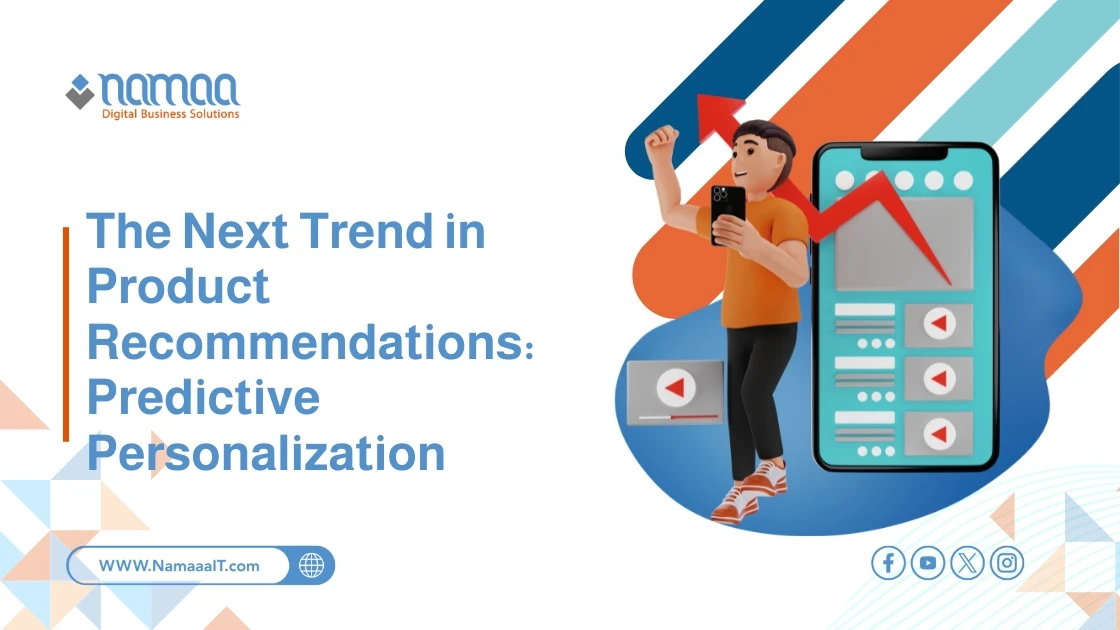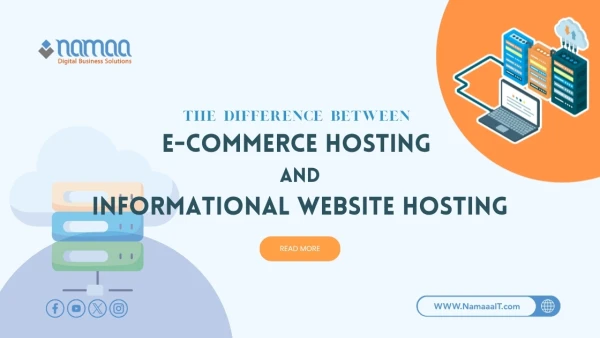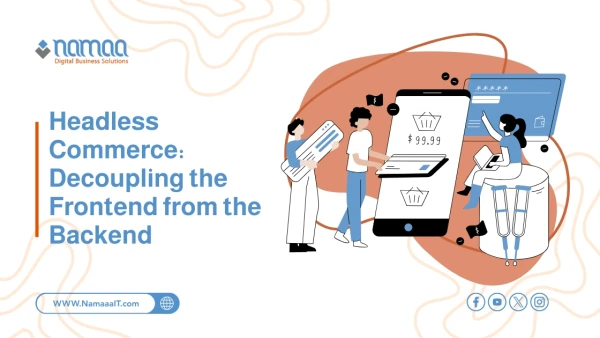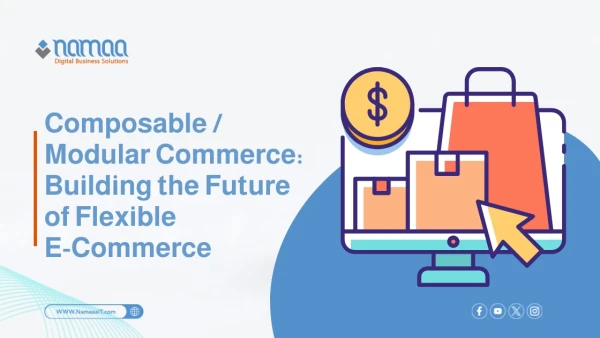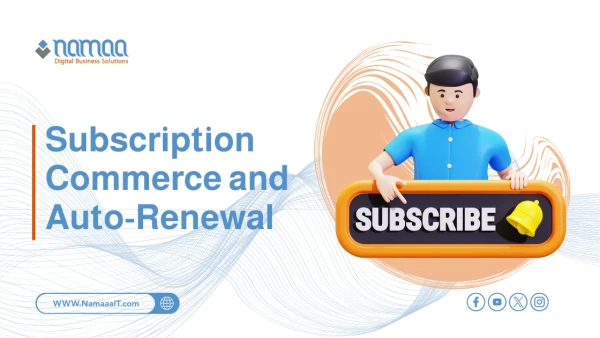Random product display is no longer enough to attract customers or earn their loyalty. Today’s users expect the store to understand them before they even speak, and to receive accurate recommendations that meet their needs even before they search. This is where predictive personalization comes in—a growing trend in product recommendation technologies.
This methodology goes beyond analyzing past user behavior; it predicts what users might want next using AI and advanced data analytics. In this article, we’ll explore how predictive personalization works, why it represents a quantum leap in the digital shopping experience, and what makes it an indispensable competitive advantage for smart platforms.
What is Predictive Personalization and How Is It Different from Traditional Recommendations?
Predictive personalization is an advanced AI technique aimed at providing personalized experiences based on future behavior expectations—not just past actions. Unlike traditional product recommendations that typically rely on browsing history or best-sellers, predictive personalization anticipates user needs rather than merely responding to them.
For example, instead of suggesting similar products to the ones a customer recently viewed, predictive personalization might present an item the customer will need in the future—based on patterns from similar users or seasonal/contextual changes.
The core difference lies in the temporal and analytical dimensions: traditional recommendations focus on the past and present, while predictive personalization looks to the future and treats data as predictive scenarios. It utilizes advanced machine learning models like deep neural networks and reinforcement learning algorithms, enabling it to adapt to user behavior changes and deliver more accurate recommendations.
This approach represents a qualitative shift in the relationship between the customer and the platform—turning interaction from reactive to proactive, making the user feel that the platform “gets them” before they even ask.
How Does Predictive Personalization Work?
Predictive personalization relies on a vast and complex data architecture, collecting diverse information about user behavior, such as browsing history, purchase records, content engagement duration, time and location, and even device type.
This data is fed into machine learning algorithms that predict future behaviors by identifying hidden patterns. Among the most commonly used models are logistic regression and deep learning algorithms like artificial neural networks. These models continuously learn from new data, enhancing recommendation accuracy.
They also leverage collective behavior across similar user groups to identify potential trends. Techniques like reinforcement learning improve user experience over time by learning from how users engage with previous recommendations and adjusting predictions accordingly.
Real-time analytics also play a crucial role by enabling immediate recommendation updates based on the latest interactions.
Benefits of Predictive Personalization in E-Commerce
Predictive personalization offers a range of essential benefits that make it a strategic choice for any e-commerce platform seeking differentiation and competitiveness.
Increased conversion rates: Users feel understood and see products directly aligned with their interests, increasing the likelihood of purchase. Data analytics reports suggest predictive personalization can boost conversion rates by 30–40% when implemented effectively.
Enhanced user experience: It reduces the time customers spend searching for the right product and delivers highly accurate recommendations tailored to expected needs, increasing satisfaction and loyalty.
Lower return rates: By providing more relevant suggestions, customers are more likely to be satisfied with their purchases, reducing returns and complaints.
Improved marketing: Platforms can leverage personalization data for precise targeting in ad campaigns, improving return on investment.
In short, predictive personalization doesn't just boost sales—it redefines the customer-platform relationship with intelligence, speed, and precision.
read more: Google Shopping Ads vs. Meta vs. TikTok: Which Achieves the Best Conversion Rate in 2025?
How to Implement Predictive Personalization in Your Online Store
- Implementing predictive personalization requires a well-structured methodology that combines tech infrastructure, data analytics, and user experience.
- Data Collection: Gather data on all user interactions—searches, purchases, display preferences, and on-site engagement. Organize it in a format suitable for analysis.
- Choose an analytics platform or build a custom model using ML tools like TensorFlow or PyTorch. You can also opt for ready-made solutions like Google Cloud AI or Amazon Personalize, which offer smart recommendation tools without full-scale development.
- Model testing: Run tests with a limited audience to evaluate recommendation accuracy. Adjust algorithms based on real user feedback, then gradually roll out to a wider audience.
- Interface integration: Present recommendations in visually engaging ways—like product suggestion strips or automated alerts. Ensure a balance between personalization and user privacy.
- Performance monitoring: Track key metrics like click-through rate, conversion rate, and engagement time to continuously refine and improve the model’s performance.
Smart, structured execution is what turns predictive personalization into a true market differentiator.
Real-World Examples of Predictive Personalization in Leading E-Commerce Platforms
Top e-commerce platforms rely on predictive personalization to enhance UX and drive sales. Here are a few notable examples:
- Amazon: Uses machine learning to analyze user behavior and generate personalized recommendations. Around 35% of Amazon’s sales reportedly come from these smart suggestions.
- Netflix: Applies deep learning to understand viewer preferences and deliver tailored content suggestions, boosting viewing time and satisfaction.
- Gemini Sound: A consumer electronics company saw a 101% increase in click-through rates and a 73% rise in conversions after implementing predictive personalization.
- Bearbottom Clothing: This men’s apparel brand increased click-through rates by 55% and conversion rates by 8% using predictive recommendation systems.
- Twiddy & Company Vacation Rentals: Achieved a 600% increase in direct bookings and a 250% improvement in conversion rates thanks to predictive personalization strategies.
These case studies highlight the significant impact predictive personalization can have on user experience and revenue growth.
Frequently Asked Questions
1. Can predictive personalization be used in dynamic pricing?
Yes, it can adjust pricing automatically based on demand forecasts, customer behavior, and market competition.
2. What’s the difference between predictive personalization and market segmentation?
Market segmentation divides users into groups, while predictive personalization tailors a unique experience for each individual based on forecasted behavior.
3. Can predictive personalization be used in email marketing?
Absolutely. It can personalize content and send timing based on the likelihood of user interaction—boosting open and click rates.
4. How does predictive personalization help reduce cart abandonment?
By predicting the likelihood of abandonment and offering tailored reminders or incentives at the right moment to encourage checkout completion.
5. Can it be used in CRM?
Yes. It helps anticipate customer needs and offers recommendations for sales and support teams to take tailored actions.
Summary
✅ Predictive personalization helped Amazon drive 35% of sales through smart recommendations.
✅ Bearbottom Clothing saw a 55% increase in CTR and an 8% conversion boost.
✅ It reduced cart abandonment by up to 26% in some global e-commerce stores.
✅ Twiddy & Company achieved a 600% rise in direct bookings and a 250% increase in conversion rates.
✅ Platforms using predictive personalization report over 80% improvement in customer satisfaction compared to those using traditional recommendations.

